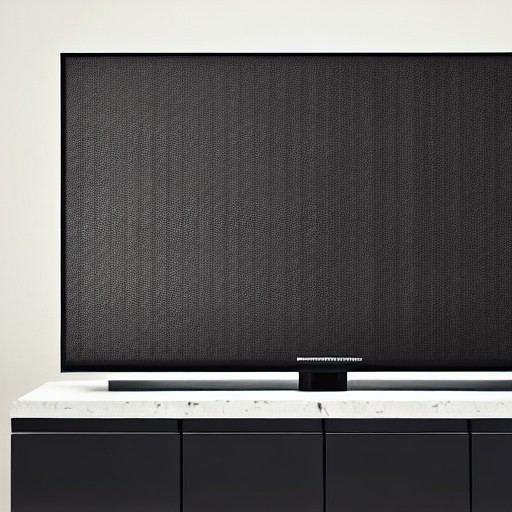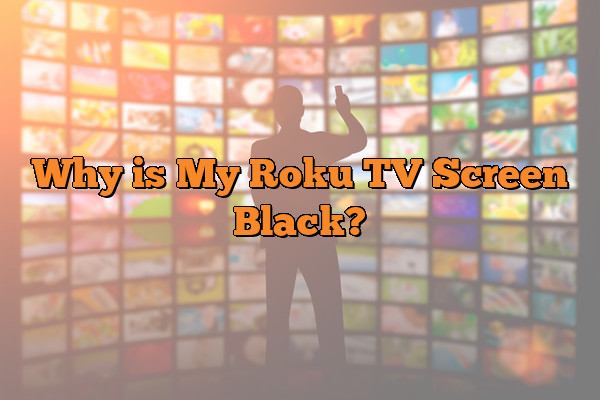Is your TV screen black but you can still hear audio? Don’t worry, you’re not alone. This is a common issue that many Roku TV users face. In this blog post, we’ll explore some of the common causes of a black screen and how to fix it so that you can get back to enjoying your favorite shows and movies.
TCL Roku TV Sound But No Picture
If you’re experiencing sound but no picture on your TCL Roku TV, don’t worry, there are a few steps you can take to troubleshoot the issue. Start by checking your cable connections, ensuring they’re firmly secured in the appropriate ports.

Next, inspect the HDMI port for any obstructions or damage. If all seems well, try using a different HDMI cable to rule out any issues with the cable itself. If none of these solutions work, restarting the TV or power cycling it can often resolve any software glitches.
However, if none of these steps work, it’s possible that there is a bigger underlying software bug that requires a factory reset. Follow these steps in conjunction with the previous sections of the blog to ensure your TCL Roku TV is up and running again with a clear picture and sound.
Power or Connectivity Cable Issues
If your Roku TV screen is black, one of the most common culprits could be power or connectivity cable issues. Begin by checking all cable connections for a secure fit. Make sure that the power cable is plugged in securely and that the TV is turned on.
:max_bytes(150000):strip_icc()/roku-plugged-in-d45c37301a4a4813b69024fdd88cf614.jpg)
A loose or faulty HDMI cable is also a common cause of black screen issues, so inspect the HDMI port and check the cable connections.
If you find a loose connection or damaged cable, try using a different HDMI cable to see if that resolves the issue. If none of these solutions work, try restarting or power cycling the TCL Roku TV to reset the system.
If the problem persists, there may be a software bug that requires a factory reset. With the right troubleshooting, you can have your Roku TV back up and running in no time.
HDMI Cable Problems
If you are experiencing a black screen on your Roku TV, it could be due to HDMI cable problems. It’s important to check the connections between the HDMI cable and both your Roku player and the TV. Make sure the HDMI cable is firmly plugged into both ends and securely seated. If this doesn’t solve the problem, inspect the HDMI port on your TV for any visible damage or debris, such as bent pins or dirt.
If the HDMI port appears to be in good condition, try using a different HDMI cable. This can help you determine whether the cable is faulty and needs to be replaced. Additionally, restarting your TV and power cycling your TCL Roku TV can also resolve HDMI cable problems. Power cycling involves turning off your TV, unplugging it from the wall, waiting a few minutes, and then plugging it back in and turning it on again.
If none of these solutions work, it could be a software bug, and you may need to perform a factory reset on your TV. This will erase all customized settings and return your TV to its original state when it was first purchased. With these simple troubleshooting steps, you can resolve HDMI cable problems and get back to enjoying your favorite Roku content without any black screen issues.

Check the HDMI cable connections
To ensure that your TCL Roku TV is functioning properly, it’s essential to check the HDMI cable connections. If your TV screen is black, it’s possible that the HDMI cable has come loose or is not connected properly.
Start by locating the HDMI cable and checking that it is firmly plugged into both the TV and the device that you are trying to connect, such as a gaming console or streaming device. If the HDMI cable is securely connected, inspect the HDMI port on the TV for any damage or debris that may be obstructing the connection.
If the HDMI cable connections and port appear to be clean and secure, try using a different HDMI cable to see if the issue is resolved. High speed HDMI cables that support at least HDMI 1.4 are recommended for use with 4K TVs.
Once you have confirmed that the HDMI cable connections are secure, restart your TCL Roku TV by unplugging it from the power source and waiting a few minutes before plugging it back in. If the issue persists, try power cycling the TV by pressing and holding the power button for 10 seconds, then letting go and allowing the TV to restart.
In rarer cases, a software bug may be causing the issue. If all other troubleshooting steps have been exhausted, consider performing a factory reset on your TCL Roku TV to restore it to its original settings. Always refer to the manufacturer’s instructions and recommendations before attempting any resets or maintenance on your TV.
Inspect the HDMI port
Inspect the HDMI port on your Roku TV to ensure that it’s not the source of the black screen problem. If the port is dirty or damaged, it can affect the connection of the HDMI cable and cause a loss of signal.
To inspect the HDMI port, turn off the TV and unplug the HDMI cable. Look closely at the port for any visible signs of dirt or damage.
If you notice any debris or dust, gently blow on the port to remove it. If you see any physical damage, such as bent or broken pins, you may need to contact a professional technician for repair. Once you have inspected the port and made any necessary repairs, plug the HDMI cable back in and turn on your Roku TV.
If the black screen problem persists, try using a different HDMI cable, and if that doesn’t work, move on to the next step in our troubleshooting guide. By taking the time to inspect the HDMI port, you’ll be able to rule out any physical damage as the cause of your issue and move closer to finding a solution.
Try a different HDMI cable
If you’re experiencing a black screen on your Roku TV, one of the potential solutions could be to try a different HDMI cable. As discussed in previous sections, there could be various issues with the HDMI cable connections or the port itself. Switching to a different cable could help eliminate this possibility and potentially restore your display.
When selecting a new HDMI cable, opt for one that’s less than 6 feet if possible. This should ensure better signal transmission and minimize any potential interference. Take the time to inspect the new cable before plugging it in, and ensure that it’s firmly connected to both the Roku player and the TV’s HDMI port.
If you’ve already tried another HDMI cable and the black screen issue persists, it’s worth exploring other possibilities such as power or connectivity issues, inspecting the HDMI port, or power cycling the TV. Ultimately, it may be a software bug that requires a factory reset.
By systematically eliminating potential causes of the black screen issue on your Roku TV, you can troubleshoot the problem effectively and restore your viewing experience.
Try restarting the TV
To restart your Roku TV is one of the easiest and quickest ways to fix a black screen problem. Sometimes, the TV just needs to reset to its default settings, which can be done with a simple restart. Start by pressing the power button on your remote to turn off the TV.
Then, unplug the TV from the power source for at least 30 seconds before plugging it back in. After plugging it back in, press the power button again to turn on the TV.
This should reboot the system and clear any software bugs that may have caused the black screen issue.
If the restarting process did not work, try power cycling your TCL Roku TV. This means unplugging your TV and all connected devices, including the streaming stick, cable box, or gaming console, from the power source for at least one minute.
After one minute, plug all the devices back in and turn on your TV. This process will refresh the electric circuit and reset the TV to its default settings.
In some instances, a factory reset may be the solution, especially when a software bug is the cause of the black screen issue. Before carrying out a factory reset, make sure you have backed up all your settings, data, and preferences.
This process will erase all the custom settings, installed apps, and personal information from the TV. To perform a factory reset, go to the system settings, select advanced system settings, and choose factory reset. The TV will restart after this process, and you will need to set it up from scratch.

By following these steps and troubleshooting solutions, you can quickly and easily fix your black screen issue and enjoy your Roku TV once again.
Remember that sometimes a simple fix such as restarting your TV or checking your cables might be all you need to do to get your TV up and running.
Power Cycling TCL Roku TV
If you’re experiencing a black screen on your TCL Roku TV, power cycling can often resolve the issue. This process involves simply unplugging the TV from the power source and leaving it disconnected for a few minutes before plugging it back in and turning it on.
Before power cycling, it’s important to check for any loose cable connections or issues with the HDMI cable. If those don’t seem to be the problem, power cycling could be the solution. This works by clearing out any temporary glitches that may be causing the black screen.
To power cycle your TCL Roku TV, start by unplugging the TV from the power outlet. Leave it disconnected for at least 15-20 seconds before plugging it back in. Once it’s plugged in, turn the TV back on and see if the black screen issue has been resolved.
If the problem persists, there may be a hardware issue with the TV that needs to be addressed by a professional. However, power cycling is a simple and effective first step to try when experiencing a black screen on your TCL Roku TV. So give it a shot and see if it works for you!
Software Bug / Factory Reset
If you’ve exhausted all other troubleshooting options and your Roku TV screen remains black, it’s possible that there may be a software bug causing the issue. In this case, a factory reset might be the solution you need.
Before performing a factory reset, however, it’s important to back up any important data or settings you want to keep, as this will erase all data on your TV and restore it to its original settings. To perform a factory reset, go to your TV’s menu and navigate to System > Advanced system settings > Factory reset.
Follow the prompts to complete the reset process. After the reset is complete, set up your TV as you did when you first purchased it. If the black screen issue was caused by a software bug, this should resolve the problem.




